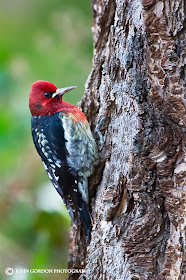Better late than never. I finally got round to editing the videos from my trip to Ontario in May. One of the more interesting mornings I had was a visit to the Pelee Island Bird Observatory.
The observatory was in the same woodlands where I had been searching for the Prothonotory Warbler.
I spent two days on Pelee island watching bird after bird arrive on the southern spit of the island.
Below is the video from that morning. I'd like to extend gracious thanks to observatory founder Graeme Gibson and field supervisor Sumiko Onishi for taking time to answer my many questions. I hope you enjoy the interview.
As you listen to the video listen to the bird song on the background, simply amazing!
My video http://www.youtube.com/watch?v=QKm7IOsLyQA
Official link to PIBO http://www.youtube.com/watch?v=LzNbhlOaVj4
Below are a few stills from my visit :
 |
| Dunlin (Calidris alpina) feeding at the Leamington ferry terminal to Pelee Island. |
 |
| This Mockingbird landed on the spit after flying across Lake Erie. The bird is pumping its wings to dislodge insects from the sand. |
 |
| Northern Mockingbird (Mimus polyglottos) |
 |
| Waves pound the spit of Pelee Island. The southernmost part of Canada except for an island a few miles south inhabited by thousands of Double-crested Cormorant. |
 | |||||||||||||||||||||||||||
| Red-bellied Woodpecker (Melanerpescarolinus) knocks off a piece of bark. |
 |
| A Snapping Turtle comes out to lay eggs on Pelee Island. |
 | ||
| Sunset from my cabin on Pelee Island. |





























